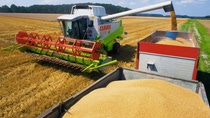Zero Product Carbon Footprint Intermediates
- Cradle-to-gate product carbon footprint (PCF) of zero
- PCF of zero achieved through use of renewable raw materials via BASF's biomass balance approach
- Use of renewable energy and benefits of BASF’s Verbund
- Drop-in solution: Identical quality and properties compared to standard BASF product
- Available for selected products




